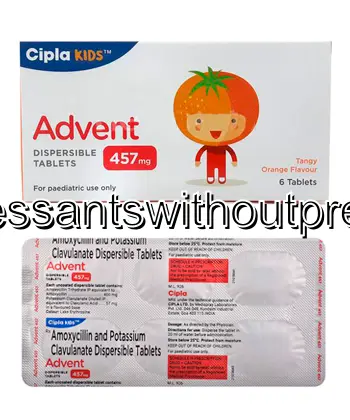Buy Amoxicillin/Clavulanic Acid Online in Australia – Fast, Hassle-Free Access
| Package | Dosage | Price | Price per Dose | |
|---|---|---|---|---|
| Dosage: 400/57mg | ||||
| 120 pill | 400/57mg | AUD724.76 | AUD6.04 | |
| 90 pill | 400/57mg | AUD649.87 | AUD7.22 | |
| 60 pill | 400/57mg | AUD449.34 | AUD7.49 | |
| 30 pill | 400/57mg | AUD268.15 | AUD8.94 | |

Amoxicillin/Clavulanic Acid Description
What is Amoxicillin/Clavulanic Acid?
Amoxicillin/clavulanic acid is a prescription antibiotic. It combines amoxicillin with clavulanic acid, a beta-lactamase inhibitor. The goal is to defeat bacteria that can resist ordinary penicillin. In many markets it is sold as co-amoxiclav or Augmentin. It is used for several common infections and for mixed infections. The combination broadens the range of bacteria that can be treated and helps when resistance mechanisms are present. It should be taken only under medical guidance and after a proper diagnosis.
How it works
Amoxicillin disrupts the bacterial cell wall, leading to bacterial death. Clavulanic acid blocks enzymes that some bacteria use to inactivate penicillin. Together they extend the antibiotic’s reach to include beta-lactamase producing strains. This makes the medication useful for infections that do not respond to amoxicillin alone. The effect depends on the bacteria involved and the site of infection.
Indications
The medicine is indicated for acute otitis media, sinusitis, community-acquired pneumonia, bronchitis, certain dental infections, urinary tract infections, and some abdominal infections. It may be used for mixed infections where both gram-positive and gram-negative bacteria are present. It is not effective against viruses, such as colds or the flu, unless a bacterial co-infection is suspected or confirmed by a clinician.
How to take and dosage
Follow the doctor’s directions on dosage and duration. The medicine is usually taken by mouth with a meal or shortly after to reduce stomach upset. Do not skip doses and complete the full course even if you feel better. Shake suspensions well before use and use the correct measuring device. Tablets should be swallowed with water; avoid chewing or breaking unless the product instruction says so. Pediatric dosing depends on weight and age, and adjustments can be needed for kidney problems. Do not alter the dose yourself or stop early without medical advice.
Possible side effects
Many people tolerate the combination well. Common side effects include diarrhea, nausea, vomiting, and skin rash. Some may experience abdominal pain or heartburn. A few may have yeast infections or altered taste. Serious allergic reactions, though uncommon, require urgent care. Seek medical help if swelling of the face or tongue, severe rash, or trouble breathing occurs. Long courses can affect the gut flora and may lead to yeast infections or Clostridioides difficile-associated diarrhea.
Warnings, interactions and cautions
Discuss all medicines you take with your clinician. Amoxicillin/clavulanic acid can interact with blood thinners, certain gout medicines, and some probiotic or antacid products. If you have liver or kidney disease, dose adjustments may be needed. It should be used with caution in people with a history of severe allergies to penicillins. Pregnant or breastfeeding women should consult a clinician to weigh benefits and risks. If you develop severe diarrhea, stop the drug and contact a doctor, as this could indicate a C. difficile infection.
Who should avoid
Do not use if you are allergic to penicillins or have had a severe reaction to amoxicillin or clavulanic acid. It is not recommended for people with certain liver problems associated with the drug, or for those with a history of significant cholestasis due to penicillins. People with kidney disease may require a reduced dose. If you have mononucleosis, use with care, as amoxicillin can worsen rash. Always inform your clinician about prior drug reactions.
Storage and handling
Store tablets at room temperature away from heat and moisture. Keep suspensions in their original bottles, tightly closed, and protected from light. Shake well before each use. Do not refrigerate unless the label says so. Keep the medication out of reach of children and discard any unused product after the prescribed period or if the taste or appearance changes.
Customer review
Patients often report relief from sinus and ear infections after completing the course. Many notice that taking the medicine with meals reduces stomach upset. Some describe mild side effects such as loose stools or a temporary metallic taste. A few users find the treatment helps quickly, while others see slower improvement if the infection is stubborn or if resistance is suspected. Overall, users value clear dosing instructions and prompt medical guidance if symptoms persist or worsen.